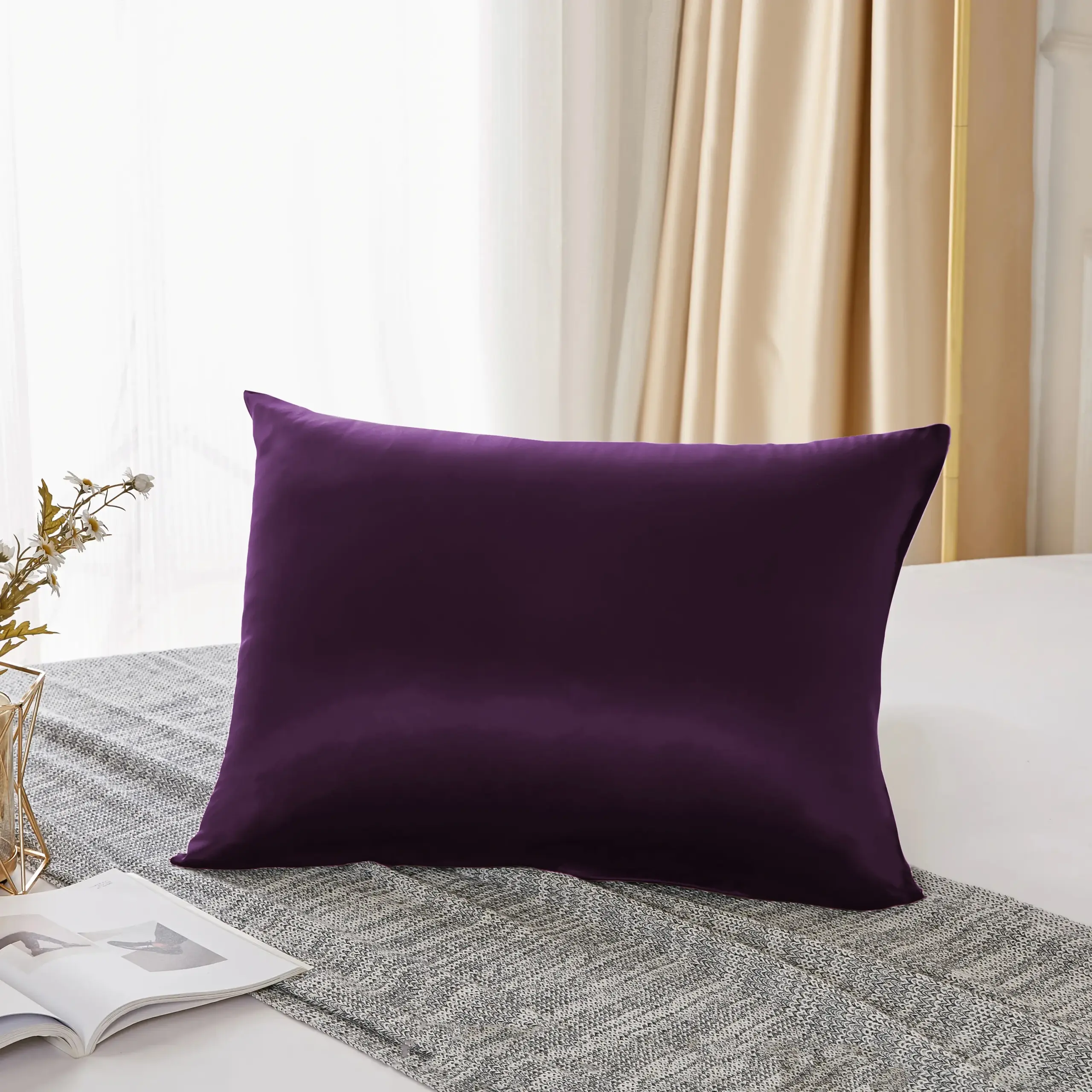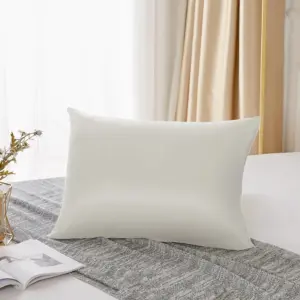Silk is exceptionally beneficial for sensitive skin due to its natural properties. The smooth texture, hypoallergenic qualities, breathability, and moisture retention capabilities make silk a perfect companion for those with reactive or easily irritated skin. What makes silk particularly suitable is its protein structure—similar to human skin—which contains natural proteins like sericin and fibroin that work harmoniously with our skin’s composition.
As specialists in premium Mulberry silk products within the optimal 19-25 momme weight range, we understand how the right silk quality can transform both your sleep experience and skin health. The amazing benefits of Mulberry silk sheets extend beyond luxury to offer genuine skin protection and care. Many customers with sensitive skin conditions report significant improvements when switching to high-quality silk bedding.
The Mulberry silk bedding skin benefits are particularly remarkable for those with sensitive skin concerns, providing a natural solution without the need for medications or treatments. Let’s explore exactly why silk has earned its reputation as the ideal fabric for sensitive skin.
Why Silk is Ideal for Sensitive Skin: 5 Key Benefits
The unique properties of silk create an ideal environment for sensitive skin through multiple complementary benefits. These natural advantages work together to protect, soothe, and maintain skin health, particularly for those prone to irritation or reactivity. Premium Mulberry silk, like the varieties we offer, provides these benefits at their highest potential due to longer, stronger, and more uniform fibers.
Scientific research consistently supports silk’s reputation as a skin-friendly fabric, with dermatologists often recommending it for patients with various skin sensitivities. The following benefits explain why Mulberry silk sheets for sensitive skin have become increasingly popular among those seeking relief from skin discomfort.
1. Ultra-Smooth Texture Reduces Friction and Irritation
Silk’s remarkably smooth fiber structure creates a friction-free surface that minimizes irritation for sensitive skin. At a microscopic level, silk fibers have a completely smooth surface—approximately 43% smoother than cotton fibers—which prevents the micro-abrasions that can trigger sensitivity and inflammation.
This exceptional smoothness offers several benefits for sensitive skin:
- Prevents sleep creases and compression marks that can develop into irritation
- Reduces the friction that can aggravate existing skin conditions like eczema, psoriasis, and rosacea
- Minimizes tugging and pulling on delicate facial skin, helping prevent premature aging
- Provides gentle contact with healing skin or areas affected by dermatitis
- Allows skin to glide across the surface without catching or rubbing
The unique smooth surface of silk pillowcases makes them particularly valuable for facial care, as the face experiences direct contact throughout the night. This reduced friction means less irritation when you wake and potentially fewer flare-ups of sensitive skin conditions.
2. Natural Hypoallergenic and Anti-Microbial Properties
Silk possesses inherent resistance to common allergens and microbes that frequently trigger sensitive skin reactions. The sericin protein found naturally in silk creates an environment hostile to dust mites, mold, mildew, and fungi—all common triggers for skin sensitivity and allergic reactions.
These natural protective qualities include:
- Resistance to dust mite colonization, unlike cotton which can harbor these common allergens
- Natural fungal and mold resistance, preventing the growth of irritating organisms
- Anti-microbial properties that inhibit bacteria that may exacerbate skin conditions
- A naturally clean surface that reduces exposure to environmental irritants
- Low chemical exposure, especially when produced to high standards like OEKO-TEX certification
For those wondering is silk good for allergies, research consistently demonstrates that high-quality silk provides significant benefits through its natural resistance to common allergens, making it an excellent choice for allergy sufferers with sensitive skin.
3. Superior Breathability and Temperature Regulation
Silk’s natural fiber structure creates excellent breathability, allowing continuous air circulation that helps maintain stable skin temperature. This ventilation prevents the heat and moisture buildup that often triggers sensitivity and irritation.
The temperature-regulating benefits for sensitive skin include:
- Efficient moisture wicking that prevents sweat from remaining in contact with skin
- Natural temperature balancing that keeps skin neither too hot nor too cold
- Prevention of the bacterial growth that thrives in warm, moist environments
- Reduction in night sweats that can exacerbate sensitive skin conditions
- Consistent comfort that discourages tossing and turning (which creates friction)
Our cooling silk sheets leverage these natural properties to create the ideal sleeping temperature, particularly beneficial for those whose sensitive skin reacts to overheating. The temperature-regulating qualities of silk help maintain the skin’s natural balance throughout the night.
4. Balanced Moisture Retention for Skin Hydration
Unlike highly absorbent fabrics like cotton, silk maintains a delicate balance with your skin’s moisture. It wicks away excess moisture while allowing skin to retain its essential natural oils and hydration. This balanced approach helps maintain the skin’s protective barrier function—crucial for sensitive skin health.
The moisture benefits include:
- Preservation of natural skin oils that protect sensitive skin
- Prevention of excessive dryness that can lead to flaking and irritation
- Enhanced effectiveness of nighttime skincare products by preventing complete absorption into bedding
- Maintenance of optimal skin hydration levels throughout the night
- Support for the skin’s natural repair processes that occur during sleep
For sensitive skin that tends toward dryness or reactivity, silk’s balanced moisture management provides the ideal environment for overnight skin recovery and maintenance.
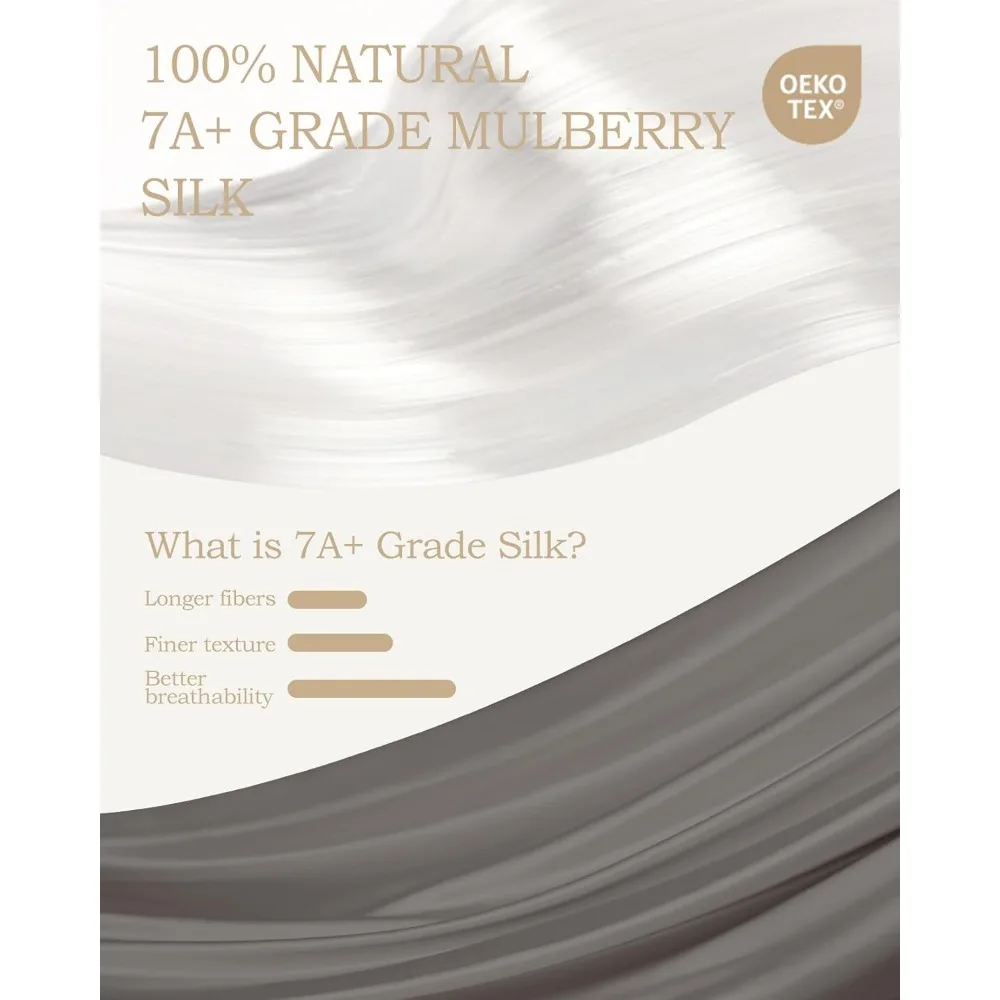
5. Natural Protein Composition Compatible with Skin
Silk’s fundamental composition makes it uniquely compatible with human skin. Made primarily of proteins (sericin and fibroin) and containing 18 amino acids also found in human skin, silk offers a biologically harmonious surface for sensitive skin contact.
The benefits of silk’s natural composition include:
- Amino acids that can support skin healing and maintenance
- Absence of synthetic fibers that might irritate sensitive skin
- Protein structure similar to human skin’s keratin proteins
- Minimal chemical processing in high-quality silk production
- Natural pH balance that complements the skin’s acid mantle
When choosing Mulberry silk sheets, you’re selecting the highest quality silk with the optimal protein composition and longest, most uniform fibers. This superior quality maximizes all the natural skin benefits while minimizing potential irritants.
Silk vs. Other Fabrics: What Makes Silk Superior for Sensitive Skin
The fabric that comes into contact with your skin plays a crucial role in managing skin sensitivity. Different fabrics interact with sensitive skin in vastly different ways, affecting everything from hydration to irritation levels. Understanding these differences helps explain why silk consistently outperforms alternatives for those with skin concerns.
When comparing fabrics for sensitive skin, we evaluate several key properties: smoothness, breathability, moisture management, allergen resistance, and chemical content. Let’s examine how silk measures up against the most common alternatives for natural silk vs. alternative fabrics to understand what makes silk exceptional for sensitive skin.
Silk vs. Cotton: Why Silk Outperforms Traditional Cotton
While cotton is often praised for being natural and breathable, it falls short of silk in several critical areas important for sensitive skin.
| Property | Silk | Cotton |
|---|---|---|
| Surface Smoothness | Completely smooth fibers | Rough, irregular fibers |
| Friction | Minimal | Moderate to high |
| Moisture Absorption | Balanced (absorbs 11% of weight) | High (absorbs 25% of weight) |
| Allergen Resistance | Naturally resistant | Traps allergens |
| Breathability | Excellent | Good |
Cotton’s rougher fibers create significant friction against sensitive skin, potentially causing micro-irritations that can develop into more serious reactions. Additionally, cotton’s high absorbency strips natural oils from the skin, potentially disrupting the skin barrier function critical for sensitivity management.
Cotton also tends to trap and hold allergens like dust mites, pollen, and pet dander, even after washing. This allergen retention can trigger ongoing skin reactions in sensitive individuals. The silk vs cotton bedding comparison reveals why many dermatologists specifically recommend switching from cotton to silk for patients with sensitive skin conditions.
Silk vs. Satin: Natural Benefits vs. Synthetic Imitations
Many consumers confuse satin (a weave that can be made from various materials) with silk (a natural fiber). Most commercial satin is made from polyester, which lacks most of silk’s natural skin benefits.
| Property | Silk | Polyester Satin |
|---|---|---|
| Composition | Natural protein fibers | Synthetic petroleum-based |
| Breathability | Excellent | Poor to moderate |
| Heat Retention | Temperature regulating | Traps heat |
| Chemical Content | Minimal in quality silk | Contains synthetic chemicals |
| Moisture Management | Balanced | Poor (can cause sweating) |
Polyester satin creates a smooth surface but lacks the breathability of natural silk, potentially trapping heat and sweat against sensitive skin. This can create the perfect environment for irritation and bacterial growth. Additionally, synthetic fabrics often contain residual chemicals from manufacturing that may trigger reactions in the most sensitive individuals.
While satin offers an affordable alternative with some of silk’s smoothness, it cannot match the natural properties that make silk truly beneficial for sensitive skin. For those unable to use animal products, plant-based alternatives like high-quality bamboo may offer a better option than synthetic satin.
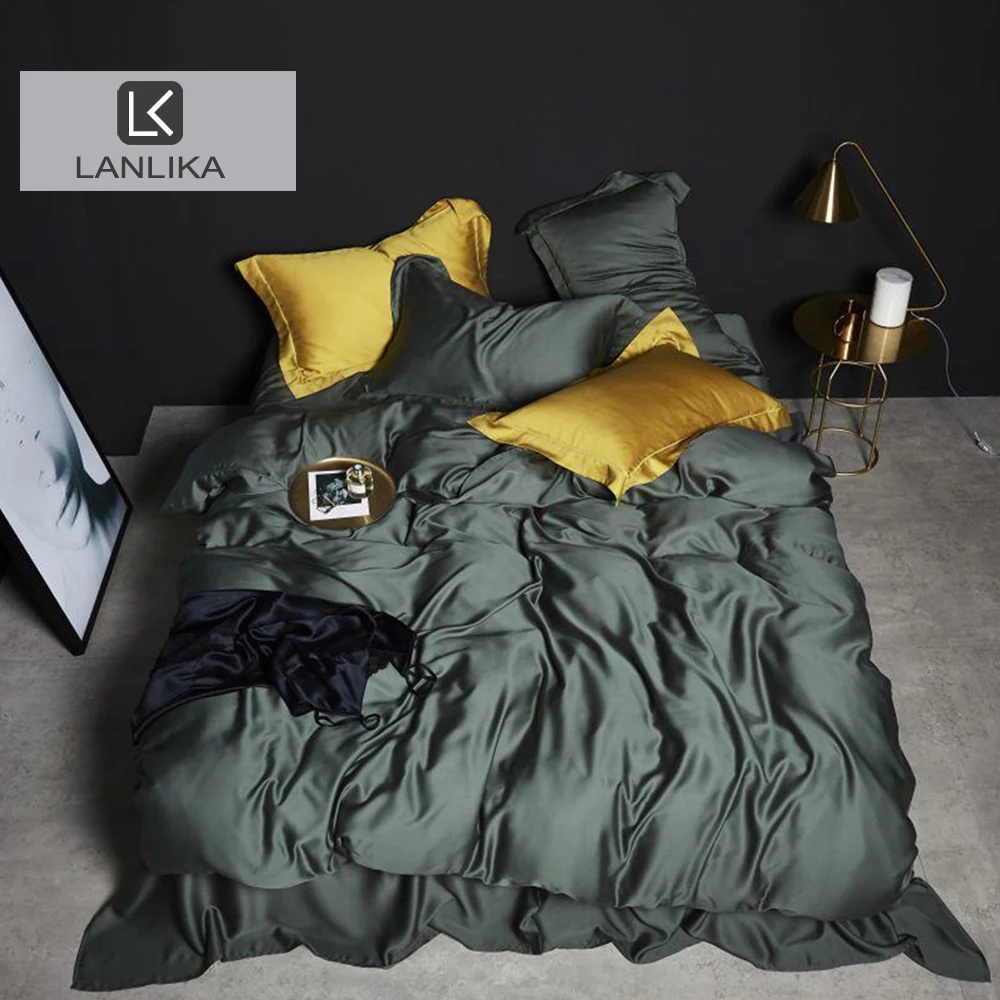
Silk vs. Bamboo: Natural Alternatives Compared
Bamboo fabric (typically processed into rayon) has gained popularity as an eco-friendly alternative with some skin-friendly properties.
| Property | Silk | Bamboo |
|---|---|---|
| Smoothness | Exceptional | Very good |
| Hypoallergenic | Naturally | Generally yes, but varies by processing |
| Chemical Processing | Minimal | Extensive chemical processing |
| Moisture Management | Balanced | High absorption |
| Natural Compounds | Skin-beneficial amino acids | Lacks protein structure |
Bamboo fabrics offer good smoothness and breathability, making them a reasonable alternative for sensitive skin. However, the extensive chemical processing required to transform bamboo into fabric raises questions about potential irritants, especially for those with extreme sensitivity.
While bamboo provides excellent eco-credentials and performs better than cotton for sensitive skin, it still cannot match silk’s natural protein structure and inherent skin benefits. Our bamboo silk sheets offer a quality alternative for those seeking silk-like benefits from plant-based sources, though pure Mulberry silk remains superior for the most sensitive skin.
Specific Silk Products for Sensitive Skin Care
Different silk products offer specialized benefits for sensitive skin, targeting specific concerns and body areas. The right silk product can address particular skin sensitivity issues while providing the general benefits we’ve discussed. Sanctuary Soft’s premium Mulberry silk collection offers various applications designed to maximize silk’s skin-friendly properties.
Understanding what makes Mulberry silk special helps explain why certain silk products perform better than others for sensitive skin concerns. The longer, stronger, and more uniform fibers of Mulberry silk provide superior smoothness and durability, ensuring the skin benefits last through proper care and regular use.
Silk Pillowcases: The Essential First Step for Facial Skin
Silk pillowcases provide targeted benefits for facial skin—often the most sensitive and visible area affected by fabric irritation. Considering we spend about a third of our lives with our face in direct contact with a pillowcase, this simple switch can significantly impact skin health.
Benefits of silk pillowcases for sensitive facial skin include:
- Prevention of sleep creases that can develop into permanent wrinkles over time
- Reduction in friction that can irritate conditions like rosacea or facial eczema
- Preservation of nighttime skincare products, allowing them to work on your skin rather than being absorbed by your pillowcase
- Minimized moisture loss that prevents morning dryness and flaking
- Reduced contact with allergens that can trigger facial redness and inflammation
Our standard size silk pillowcases feature the optimal 19-25 momme weight range, providing the perfect balance between luxurious smoothness and durable performance. This weight ensures the maximum skin benefits while maintaining excellent durability with proper care.
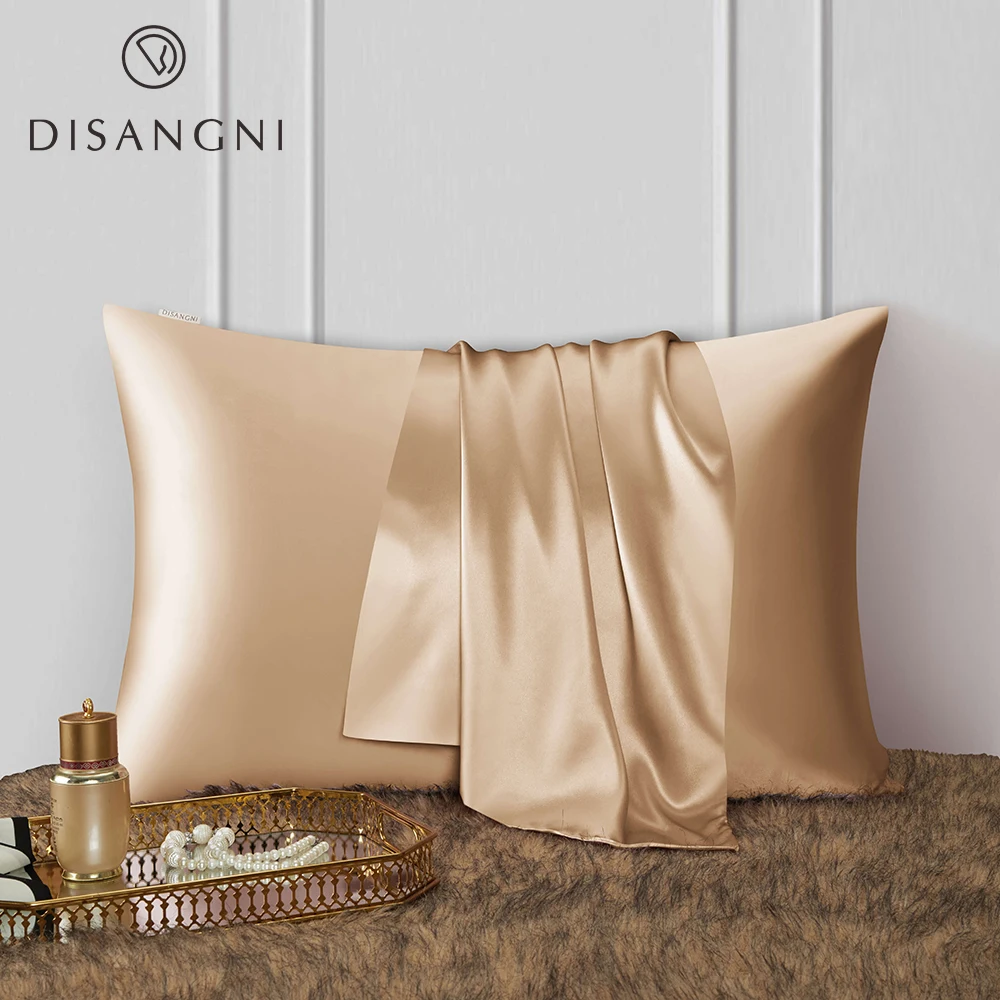
Silk Sheets and Bedding: Full-Body Benefits for Sensitive Skin
Extending silk’s benefits beyond the face, complete silk bedding provides whole-body protection for sensitive skin. This comprehensive approach is particularly valuable for those with widespread sensitivity or specific body areas affected by conditions like eczema or psoriasis.
Full silk bedding offers additional benefits:
- Continuous smooth contact for all skin surfaces during sleep
- Consistent temperature regulation throughout the night, preventing overheating that triggers sensitivity
- Reduced full-body contact with potential allergens and irritants
- Minimal friction for sensitive areas like elbows, knees, and feet that may develop rough patches
- Creation of a complete skin-friendly sleep environment that supports overnight recovery
Our 100% silk sheets provide the ultimate sensitive skin protection, enveloping the entire body in silk’s protective benefits. For those with body-wide sensitivity issues, complete silk bedding creates a comprehensive sanctuary for skin recovery and maintenance.
100% Silk Sheets, Green Silk Sheets, King Size Silk Bedding Set, Mulberry Silk Bedding Sets, Queen Size Silk Bedding Set
Price range: $1,246.21 through $1,615.22 Select options This product has multiple variants. The options may be chosen on the product pageBamboo Silk Sheets, Cooling Silk Sheets
Price range: $130.76 through $177.80 Select options This product has multiple variants. The options may be chosen on the product page100% Silk Sheets, King Size Silk Bedding Set, Mulberry Silk Bedding Sets, Queen Size Silk Bedding Set, White Silk Sheets
Price range: $1,000.79 through $1,351.42 Select options This product has multiple variants. The options may be chosen on the product pageBamboo Silk Sheets, Queen Size Silk Fitted Sheet
Price range: $230.24 through $297.88 Select options This product has multiple variants. The options may be chosen on the product pageKing Size Silk Pillowcases, Mulberry Silk Pillowcases, Queen Size Silk Pillowcases
Price range: $94.96 through $121.56 Select options This product has multiple variants. The options may be chosen on the product pageMulberry Silk Fitted Sheet, Mulberry Silk Sheets
Price range: $486.21 through $944.97 Select options This product has multiple variants. The options may be chosen on the product page
Expert Perspectives on Silk for Sensitive Skin
Dermatologists and skin specialists frequently recommend silk bedding for patients with sensitive skin conditions. This professional endorsement stems from both clinical observations and scientific understanding of how fabrics interact with sensitive skin.
Dermatological perspectives on silk typically highlight several key factors:
- Silk’s exceptionally smooth surface minimizes the physical irritation that often triggers sensitivity reactions
- The natural temperature regulation helps prevent the overheating that can exacerbate conditions like eczema and rosacea
- Silk’s resistance to dust mites and other allergens reduces exposure to common triggers
- The natural proteins in silk are less likely to cause allergic reactions than synthetic alternatives
- Silk’s minimal absorbency helps maintain the skin’s moisture barrier—critical for sensitive skin protection
Medical professionals often note that skin improvement from switching to silk is not merely subjective—they observe measurable differences in patients’ skin condition, particularly decreased inflammation and irritation. For comprehensive information about silk’s benefits, our complete guide to Mulberry silk bed sheets provides detailed insights backed by expert knowledge.
Important Considerations When Using Silk for Sensitive Skin
To maximize silk’s benefits for sensitive skin, certain quality and care factors are essential:
Quality matters significantly: Look for genuine Mulberry silk in the 19-25 momme weight range for optimal skin benefits. Lower quality or lightweight silk (below 19 momme) may not deliver the full range of benefits.
Proper washing is crucial: Use pH-neutral, enzyme-free detergents specifically formulated for silk. Regular detergents can strip silk’s natural proteins and leave residues that may irritate sensitive skin.
Color considerations: For extremely sensitive skin, undyed (natural white) or vegetable-dyed silk may reduce exposure to potential chemical irritants in conventional dyes.
Verify authenticity: Real silk burns with a smell similar to burning hair (because both are protein-based) and turns to ash rather than melting. Synthetic alternatives melt when exposed to flame.
Consider certifications: Products with OEKO-TEX certification ensure testing for harmful substances, providing additional security for sensitive skin users.
While silk requires more careful maintenance than some fabrics, the skin benefits justify the extra care, particularly for those with significant sensitivity issues. Many find that why choose Mulberry silk sheets becomes clear after experiencing the skin improvements firsthand.
Frequently Asked Questions About Silk for Sensitive Skin
What type of silk is best for sensitive skin?
Mulberry silk is considered optimal for sensitive skin due to its longer, smoother fibers and consistent quality. Within this category, look for 19-25 momme weight, which provides the ideal balance between luxurious smoothness and durability.
Can silk cause allergic reactions in some people?
True silk allergies are extremely rare. When reactions occur, they’re typically caused by residual chemicals from processing or dyes rather than the silk fiber itself. Choosing high-quality silk with proper certifications minimizes this risk.
How often should silk pillowcases be washed for optimal skin benefits?
For sensitive skin, washing silk pillowcases weekly is generally recommended. This removes accumulated oils, skin cells, and potential allergens without excessive wear on the fabric.
Is silk suitable for babies or children with sensitive skin?
Yes, silk is excellent for babies and children with sensitive skin concerns. Its smooth surface, hypoallergenic properties, and temperature regulation make it ideal for delicate young skin, though proper supervision is always necessary with infants.
How can you tell if silk is high quality?
High-quality silk has a lustrous, smooth appearance with consistent color. It feels substantial but light, with a soft drape. The momme weight (similar to thread count) should be 19-25 for optimal bedding. When rubbed between fingers, real silk creates a subtle warmth rather than feeling slippery.
Are there any skin conditions where silk might not be recommended?
Silk is beneficial for most skin conditions, but those with severe weeping eczema might find that silk requires more frequent washing than other fabrics. However, even in these cases, the benefits typically outweigh the maintenance considerations.
What momme weight is best for sensitive skin benefits?
The optimal range is 19-25 momme. Below 19 momme may not provide sufficient durability, while above 25 momme doesn’t necessarily increase skin benefits and may reduce breathability.
Are dyed silk fabrics safe for sensitive skin?
High-quality silk using non-toxic, properly fixed dyes is generally safe for most sensitive skin. However, individuals with extreme chemical sensitivities may prefer undyed natural silk or products with specific non-toxic dye certifications.
Is Silk Bad for Sensitive Skin? Addressing Common Misconceptions
Despite silk’s benefits, several misconceptions persist about its use for sensitive skin. One common myth is that silk itself is a common allergen. In reality, true silk protein allergies are extremely rare. When sensitivity reactions occur with silk products, they’re almost always related to processing chemicals, dyes, or detergent residues rather than the silk fiber itself.
Another misconception is that silk’s high cost makes it impractical for regular use. While silk is indeed an investment, its durability when properly cared for means it often outlasts cheaper alternatives, offering better value over time. The potential reduction in skin care products and treatments needed may also offset the initial cost for those with significant skin sensitivity issues.
Some believe silk is too delicate for practical daily use. Modern high-quality silk, especially in the appropriate momme weight, is surprisingly durable with proper care. Many Mulberry silk products maintain their benefits through years of regular use.
Contrary to another common myth, silk doesn’t cause or worsen acne. Its smooth surface and resistance to bacterial growth actually make it beneficial for acne-prone skin by reducing friction and irritation that can trigger breakouts.

